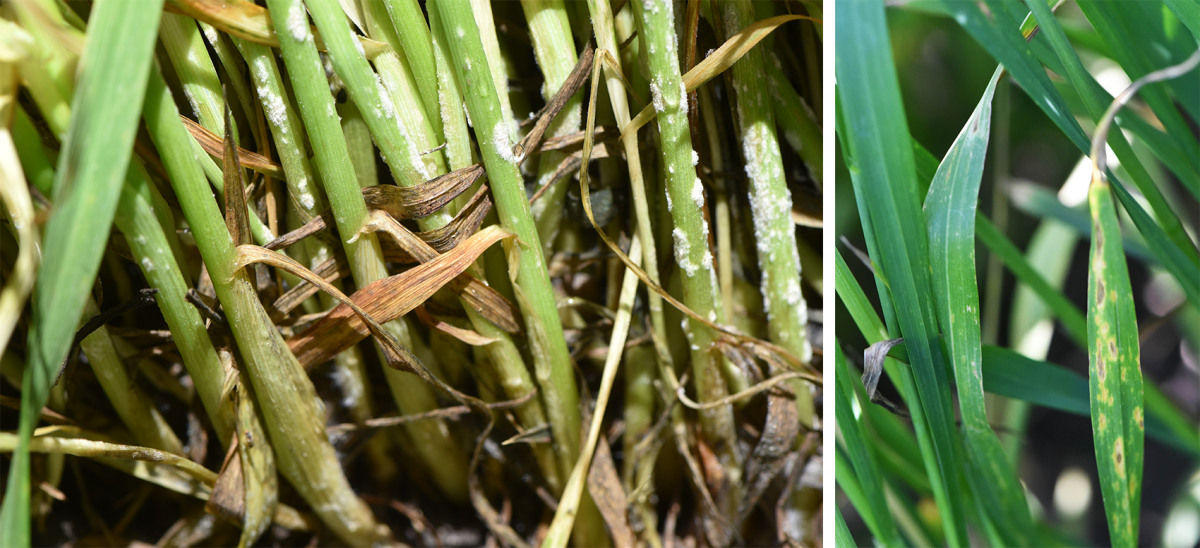Levels of Wheat Diseases Low, But Likely to Increase
A survey of wheat fields May 13-16 in the southeast, south central, southwest, and southern Panhandle regions of Nebraska revealed trace to low levels of disease, with the majority of fields showing a luxuriant green (Figure 1) with a high yield potential. Growth stage ranged from Feekes 6 to 7 (first to second node detectable) in the southern Panhandle to Feekes 8-9.2 (flag leaf emergence to boots just swollen) in the southeast.

Powdery mildew (Figure 2) was observed in one field with a thick stand in Saline County. In the rest of the fields surveyed, there were trace to low levels of fungal leaf spots (Figure 3) typical of the early stages of development of tan spot or Septoria tritici blotch. No rust or virus diseases were observed.
Management
Although disease levels are currently low, they are likely to increase in the coming weeks in areas or regions that receive moisture. Continued scouting is recommended. If a decision is made to apply a fungicide, it should be timed to protect the flag leaf. In regions of the state (southeast, south central, and southwest) prone to Fusarium head blight (scab), it will be best to time a fungicide application at early flowering to suppress scab and control foliar fungal diseases at the same time with one spray.
Currently, the Fusarium risk assessment tool is showing a low risk for most of Nebraska and a medium to high risk in the southeast corner of the state. Average to heavy and frequent rainfall during the two weeks before flowering and into the flowering period significantly increases the risk of scab. Monitor the weather and the risk assessment tool to help you make an informed decision as to whether to spray for scab. The best fungicides for scab suppression are Prosaro, Caramba, and Miravis Ace. Read and follow label instructions and restrictions before applying any fungicide.
Update from Southern States
In Kansas as of May 16, stripe rust is affecting flag leaves in some areas in the south-central and southwestern parts of the state. Leaf rust is more widespread than stripe rust and is most prevalent in south-central Kansas, but has been observed in a line of counties extending from the southern Kansas border (Comanche County) to the northern border with Nebraska in Phillips County which is approximately south of Harlan County in Nebraska. In Oklahoma as of May 16, both stripe rust and leaf rust are present at moderate to severe levels in some areas.
These reports from Oklahoma and Kansas suggest that we are likely to see leaf rust in Nebraska wheat fields in the coming weeks. We may also see stripe rust, but because warm temperatures suppress it, its incidence, severity, and prevalence are likely to be less than those of leaf rust, which is favored by warmer temperatures.
Source: University of Nebraska CropWatch

